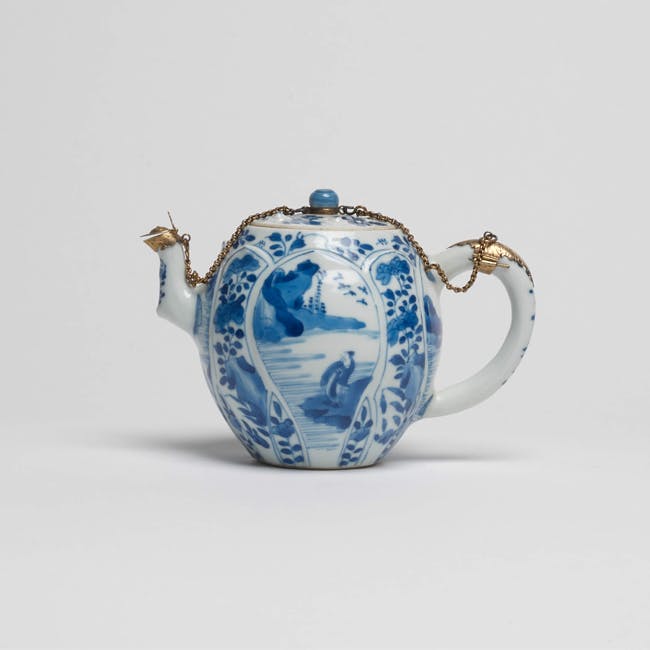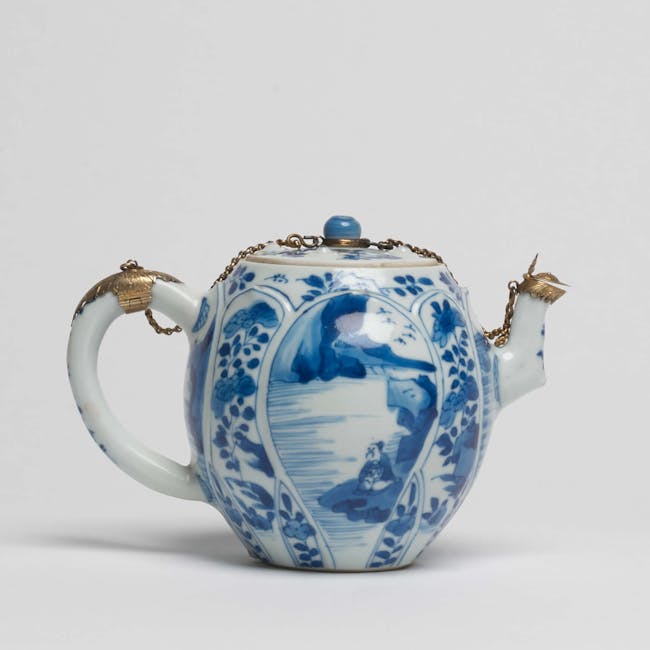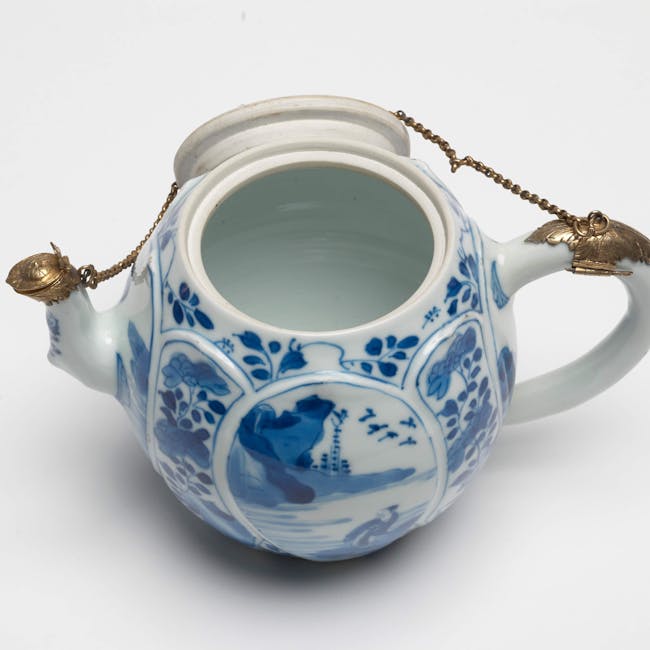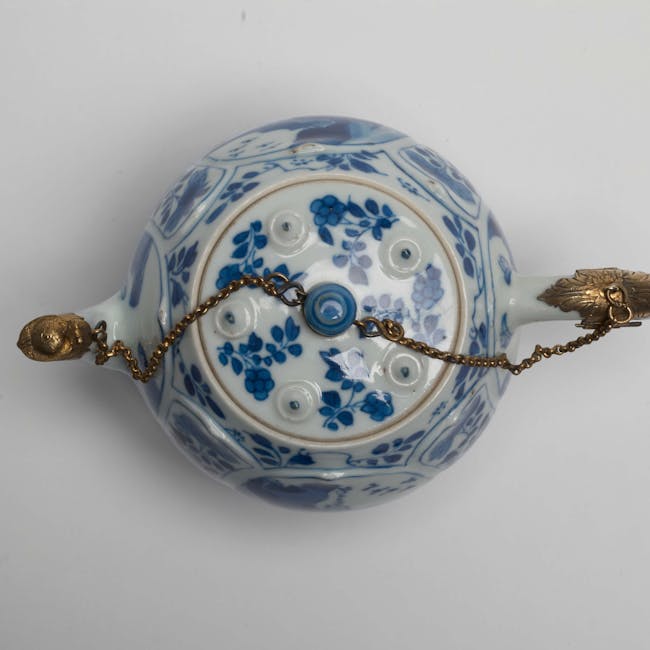This Chinese lotus shaped teapot with gilt bronze mounts is decorated in underglaze blue. The body of the teapot is eight panels in relief simulating a lotus flower. The main panels show river scenes with fishermen, alternating with panels decorated with stylized rocks and flowers. The spaces between the panels around the base and rim are also decorated with flowers. The spout – in the shape of a stylized branch - and rounded handle are also decorated with foliage. The lid has small nodules simulating the top of a lotus seed pod, and is also decorated with leafy branches.
For more than 2,000 years tea has been an integral part of the Chinese culture permeating the daily life of every social class. The evidence of the importance of tea drinking in China can be seen in literature, paintings and the porcelain tea utensils that have survived.
Tea leaves originally grew in the south-west of China and according to legend the discovery was done by farmers in their search for edible plants. The first written evidence for tea can be found in the Tong yue, a contract made by the poet Wang Bao in 59 B.C. Due to this text it is known that the earliest consumers of tea were scholars.
It was not until the Eastern Jin Dynasty (1115 - 1234) that tea was also drunk by the rest of the population. During the Tang Dynasty (618 - 907), the drinking of tea became a national habit because of the influence of Chan Buddhism. Buddhists drank their tea to keep them mentally alert during meditation. Texts, mural paintings and artefacts dating from the Liao (916 - 1125), Jin (1115 - 1234) and Yuan (1271 - 1368) Dynasties supply information on tea-drinking and reveal that it had not changed markedly since the Tang Dynasty although the utensils used were less luxurious.
It was during the later Yuan/early Ming Dynasty (1368 - 1644) that using loose tea leaves brought significant changes to tea utensils. A globular teapot with broad base, wide mouth, free-flowing spout and handle ribbed like bamboo was invented. a white-glazed teapot, ascribed to the Yongle period (1403 - 24) in the Collection of the National Palace Museum, Hong Kong is identified as the first porcelain teapot. Teapots with overhead handles were used from the mid - and late Ming years onwards but are often declared as wine ewers although it has the same features as the teapot.
During the Qing Dynasty (1644 - 1911) the production and export of tea flourished as never before. With the interest in tea the demand for tea-ware also increased. It is known that Japan had been a client for Chinese tea ceramics for years and large numbers of porcelain ewers and tea bowls were ordered from the kilns of Jingdezhen. Also the export of tea to the West increased the demand for tea wares there. From about 1640 onwards, records show the ordering of teapots, -cups and even complete tea-sets in China by the Dutch East India Company (V.O.C.) These sets consisted of both Yixing stoneware and porcelain and were often made after European silver or porcelain examples. A new form of tea bowl was invented during the Kangxi period (1662 - 1722): a covered bowl for keeping the tea warm, with wide and flaring mouth and a lower portion to accommodate the settled tea leaves. It can be said that the cover became the hallmark of Qing tea ware.







